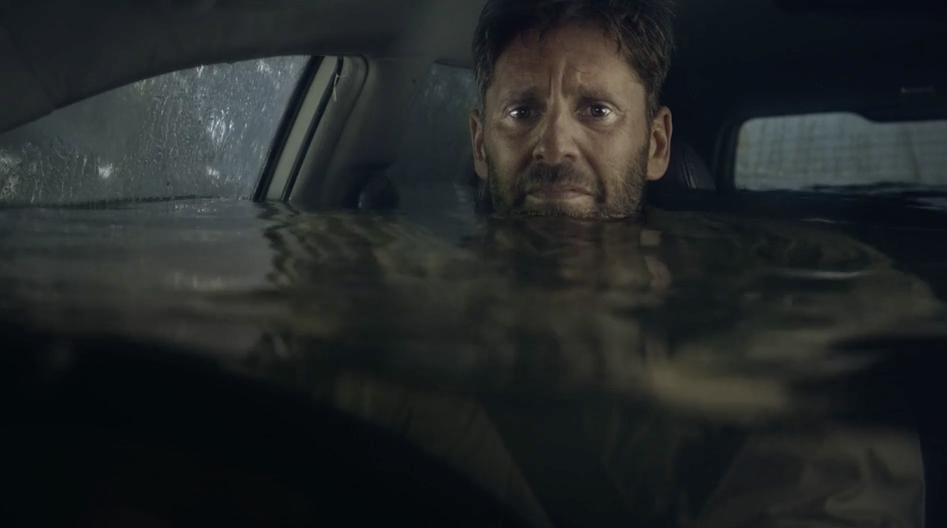How to direct an ad featuring one car, one take and 4,000 litres of water
A creative comes up with a clever idea. Then director Miles Murphy has to make it happen. Here, he details the challenges with filling a car full of 4,000 litres of water for a Queensland Fire and Emergency Services ad.
I recently filmed an on online video for the Queensland Fire and Emergency Services for ad agency Ogilvy to highlight the risks of driving through flooded roads.
We put an actor in the front seat of a car, filled the car to the brim with water and got our talent to tell a harrowing true story of driving through flood waters. All in one take…
There were many challenges for this commercial, be it technical, visual and performance wise.
Safety
There is a significant safety issue of putting an actor inside a car being flooded with 4,000 litres of water then rinse and repeat. Part of this required removing the motor and discard any fluids or chemicals from the car that could possibly leach into the water.
Using this vehicle in such an unusual way meant we needed to be very deliberate and very safety conscious in every aspect of filming. This included an easy escape route above the actor and a safety officer sitting in the car out of shot, with breathing apparatus should it take longer than anticipated to exit the vehicle safely.
Here’s a short video of how the car setup looked:
Making the car watertight
Almost everything was stripped from the car. Next we had to make the car watertight whilst maintaining the integrity of the car itself. This was a lot trickier than you might think. A car is designed to keep water out not in, and even then it’s fairly superficial in its ability to do so. After all, it’s a car not a boat. In a real life flood situation the water is both in and outside the car. However, when you fill a car (only on the inside) with nearly four tonnes of water there is a good chance something is going to give. The biggest issue was keeping the windows intact.
Visually this was challenging, because for dramatic purposes we needed to use a lens wide enough to demonstrate the threat of rising water. But in terms of safety, we needed a camera position that gave us the ability to hide the reinforcing needed for the windows.
Even with reinforced windows, we had to manage a crack in the front windscreen that increased with every take. By the time we wrapped it had crept across the windscreen ending just out of shot to the right.
Creating an authentic environment
In the real world the water outside the car would in most cases will be higher than inside. To camouflage this we staged our scene by creating a moody, claustrophobic environment. We used a combination of increasing rain on the windows, windblown foliage in the background and the hyper-real way in which the story was told. Having our actor Marco Sinigaglia talk directly to camera and never once try to escape created a chilling feel that really draws the audience into the scene. Once you see the water, it’s impossible to look away. In this case the tension is such that we never question the physics of the world.

Performance
Marco’s performance was particularly strong. Especially given the claustrophobic nature of this scenario and the way the water poured into the uneven dimensions of the car. But before Marco could even begin to nuance his timing and emotional arc in his performance we first had to work out a constant water pressure to allow a dramatic rise that was not so loud that it would drown out his dialogue.
The initial rise in water came very quickly due to the seats and other objects taking up a lot of the floor space. The water then slowed dramatically as it had to fill the open space above the seats, then increased again as the camber in the roof made the interior space tighter again.
Once we had a sense of this, Marco could time his performance to perfection. First he built tension as he described his predicament through the forbidding nature of his delivery. Then to create a meaningful impact as the audience notices the flooding water, he times his dialog to perfection. As the water level began to rise very quickly towards the end Marco’s reaches his emotional heights as the water lapped up under his chin.
The end result is something quite powerful.
Miles Murphy is director at Kiosk Film. You can check out more of his work on his site.


Miles Murphy [Edited under Mumbrella’s comment moderation policy]